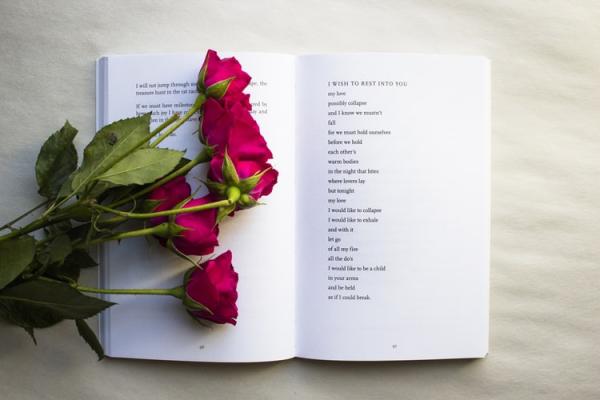Eco-Poetry: A Conversation with Poet Pam Davenport
- August 3 2019
- 3 min read
Eco-Poetry: A Conversation with Poet Pam Davenport

Eco-poetry is a style of poetry that is less about simply describing nature and more about becoming one with it. That's, at least, how poet Pam Davenport writes hers.
She teaches eco-poetry workshops in outdoor settings. She encourages writing from the perspective of plants, animals, seasons; nature itself. Her next workshop, for any Custom Earth Promos blog fans local to the area, is in September at the Flagstaff Arboretum. This is where Arizona public radio station KNAU recorded yesterday's "Poetry Friday" segment.
One thing Davenport has always loved doing is gathering people together and writing as a group, especially in a place like The Arboretum, a location described as an incredibly beautiful and peaceful setting. The group can also draw in each other's creative energy.
Davenport now has such a lofty idea with the notion of eco-poetry that she believes consciousness can be changed.
Change your consciousness by thinking about the damage single use-plastic does to the planet and replace it with reusable plastic.
"If you think about it, we human beings came on the scene just recently, like, maybe a minute ago if we consider all of living history. So why not put the elephants, the otters, the trees, the lettuce, you know , in the center. So, that's one thing that's been very helpful to me."
Flagstaff, Arizona, Poet Pam Davenport
When Davenport holds a workshop, she looks at what other people have done and how they have done it. She believes that something magical happens when the group then steps outside. The write where they have inspiration, not only from their surroundings but from what they've been reading together and talking about.
People may be drawn to express gratitude or write from the perspective of another creature, plant, or animal. This could really change someone's thinking. Yesterday, her husband asked her, "What would the elephant story be as opposed to the hunter's?" She found that to be very interesting.
Davenport then read KNAU a poem written in California. She was talking to an oak tree, which she is becoming increasingly convinced is a sensible thing to do. While she was having this conversation, she was thinking about an oak tree behind her own home.
Davenport said that this just sort of happened. She isn't saying that eco-poetry is a higher level of thinking but that it does take her to a place where she is not only able to have this experience but also go deeper into these ideas. It goes beyond the description.
"Can we talk?
I wonder if my mindless chatter matters,
makes you rather not,
talk I mean. I wonder at my mindless mind
reading a sign may be you lived hundreds of years,
the number makes my works whir.
I wonder do you know I've sat for days
outside my door with your kin?
Can you help me and there it is, my problem, not yours,
with your curvy branches reaching more out than up,
and I a passing thought but I wonder still,
do you think my chatter mind weighs her down?
Her branches weighted with acorns weighted with fruitness
at summer's end when steller's jays and squirrels gather
to knock fat acorns to mossy earth will whitetail deer leave scattered seeds?
I wonder at her rising and still I try to be,
with her try to pause mind murmur
and I wonder how you hold
red-tailed hawks heavy homes.
Do you think we can talk,
could I hear you hear her,
has any one of us ever heard?"
Talking to Coastal Live Oak at Sycamore Springs Thinking of Mountain Gambel Oak Back Home by Pam Davenport
Gain access to Orders, Tracking, Custom Options and Much More!